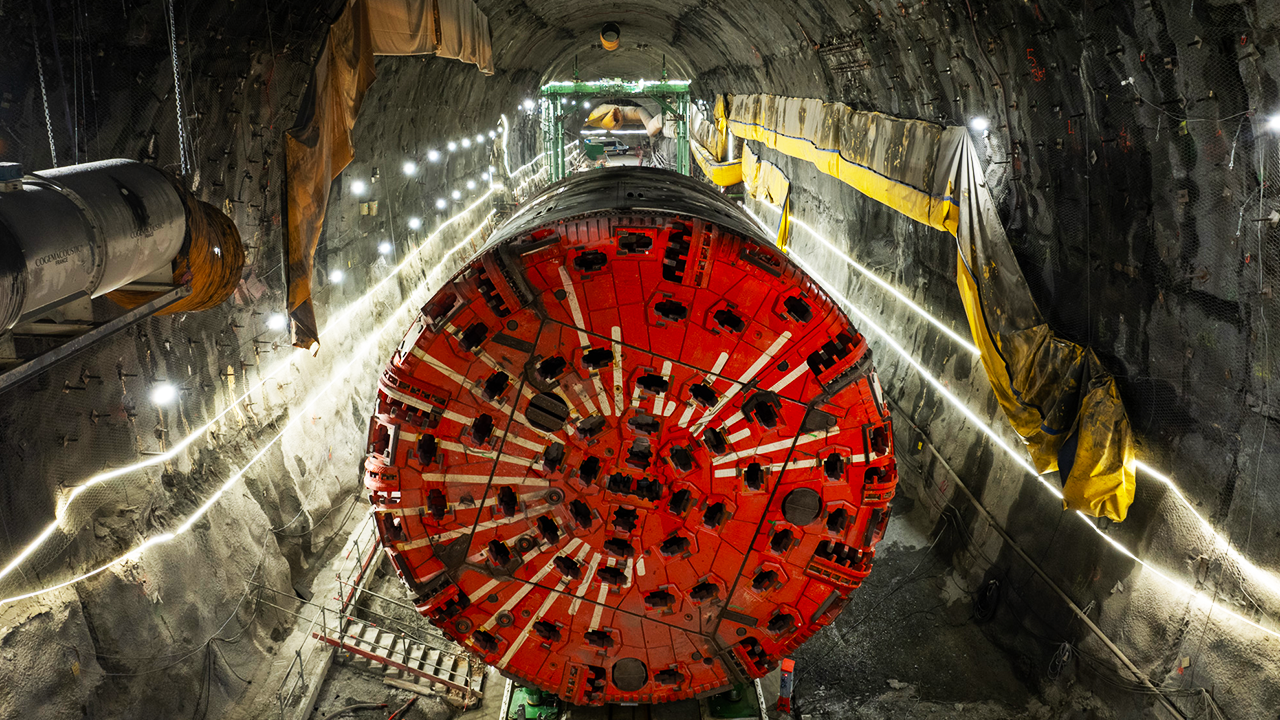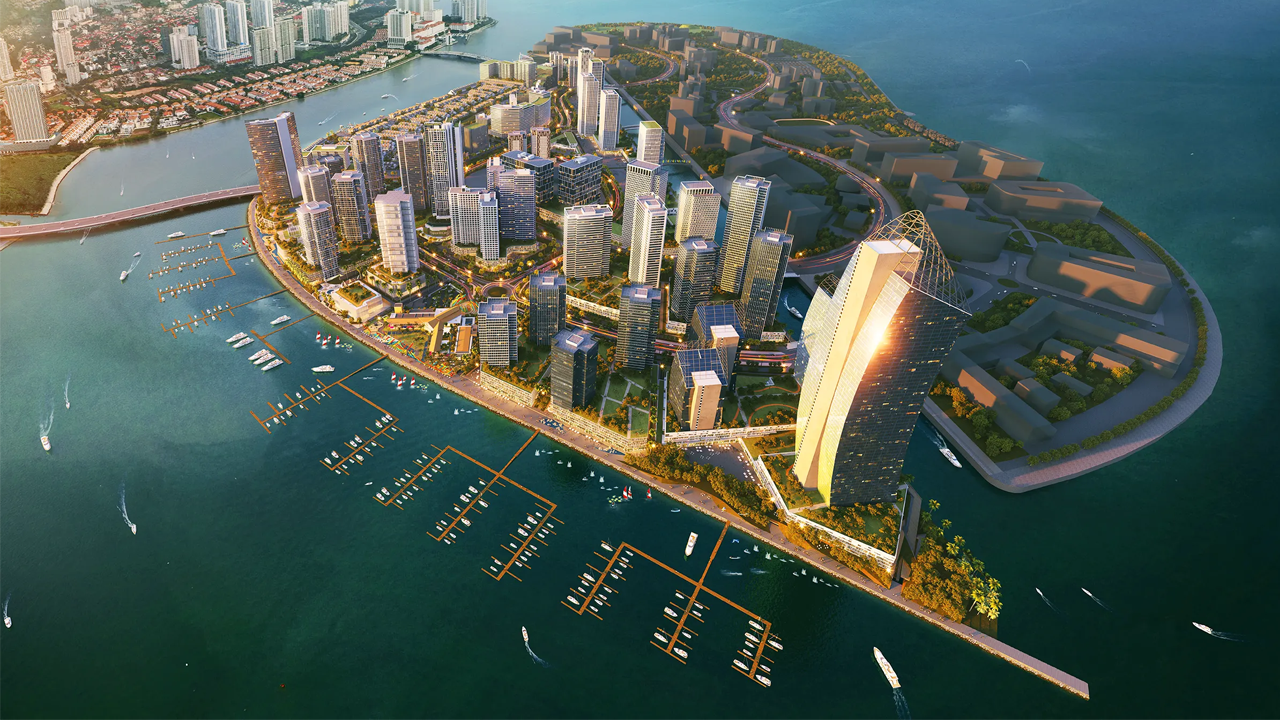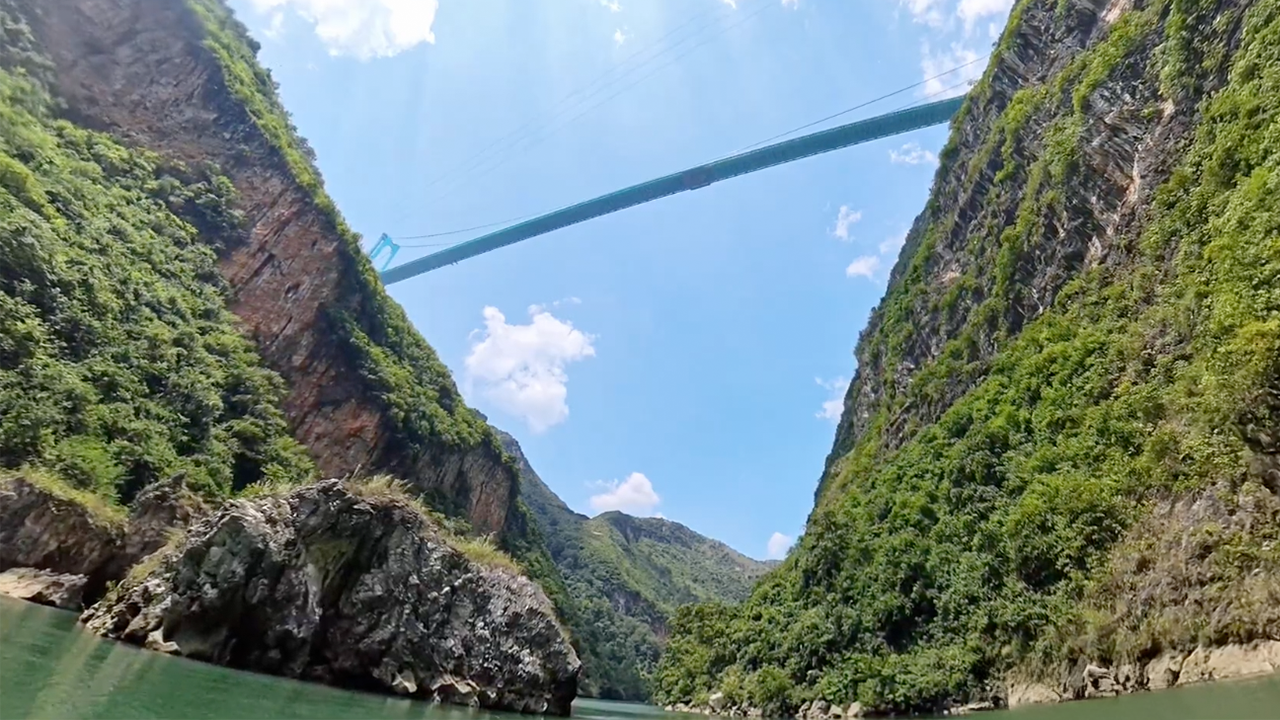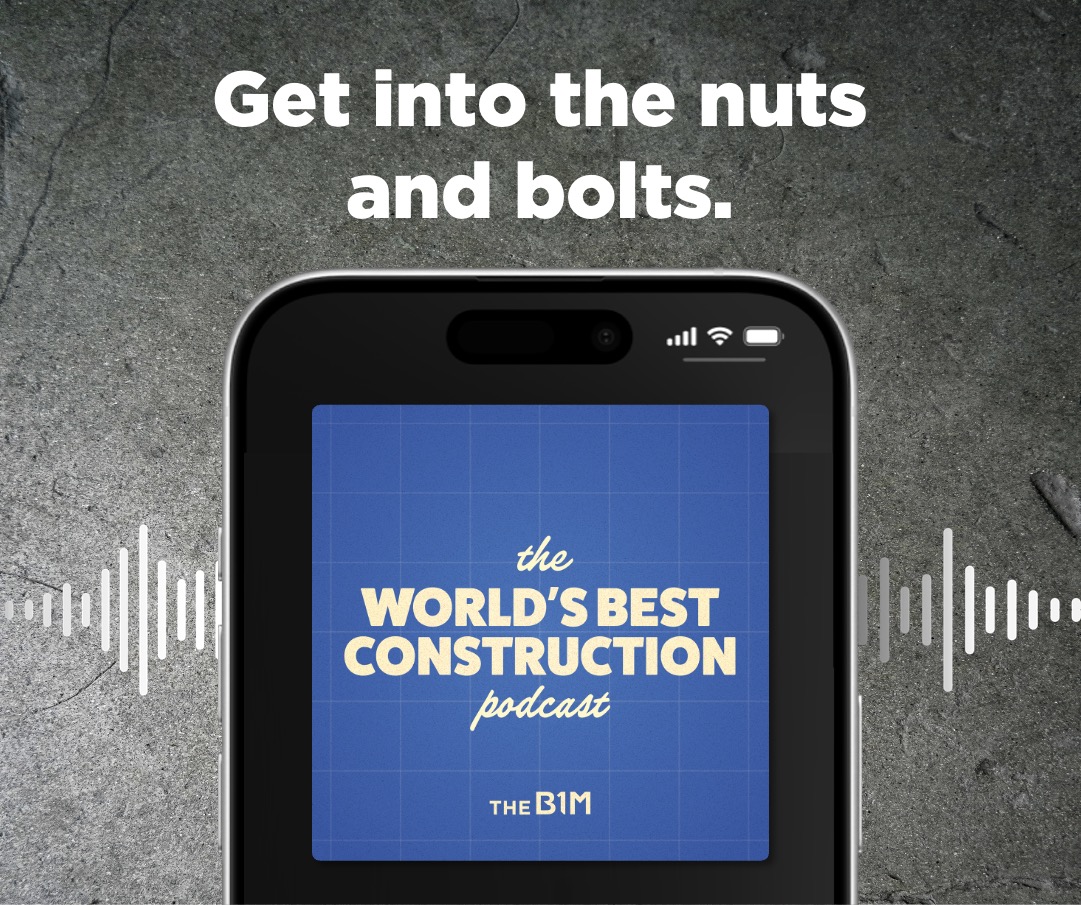Canada's $2BN Olympic Nightmare is Still Not Over
- Youtube Views 705,881 VIDEO VIEWS
Video narrated and hosted by Fred Mills. This video contains paid promotion for Brilliant.
It’s been almost 50 years since Montréal hosted the Greatest Show on Earth, on one of the most spectacular Olympic Parks ever attempted.
At the centre of it all was the iconic Olympic Stadium, a venue that’s gone on to have quite a unique story.
With an ambitious design to put Montréal on the map while bringing pride back to the Games after the troubles of ‘72, there was a lot at stake to get it right.
Drapeau's dream
The 1976 Olympics was a key part of Mayor Jean Drapeau’s plan to turn the former capital into a world-class city.
With the successful Expo 67 fresh in the memory, Drapeau was confident of pulling off another big show when the news was announced in 1970.
But its construction went on to become one of the biggest debacles in sporting history, which was followed by decades of major failures.
Now, the city is embarking on a massive, expensive renovation to put these issues to bed forever.
Montréal might finally be getting the stadium it dreamed of half a century ago. The question is — would they be better off without it?
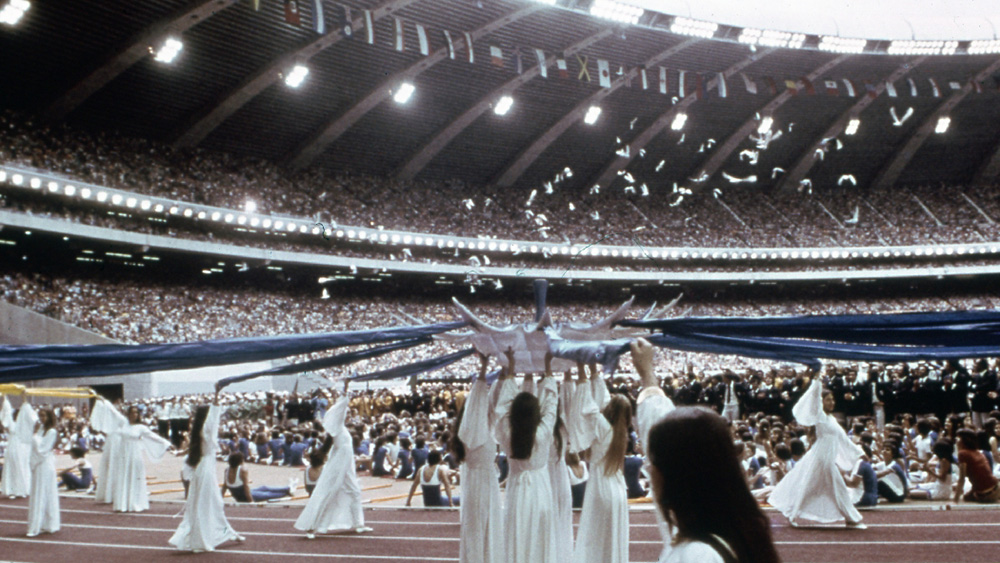
Above: The 1976 Olympics would become the largest sporting event in Canadian history. Image courtesy of Archives de la Ville de Montréal.
It’s 1972, and Montréal has just four years to prepare Canada’s first — and so far only — Summer Olympics.
Drapeau desperately needed ideas for the Olympic Park, with its all-important centrepiece that every Games must have — the main stadium.
Working with a very optimistic budget of CAD $120M for the entire event, the hunt began for an architect that could design something suitably ambitious. Well, ‘hunt’ might not quite be the right word — because there was only ever one real candidate.
Roger Taillibert had just finished redesigning Parc des Princes — now the home of French football club Paris Saint-Germain.
Dynamique duo
Together, Taillibert and Drapeau took charge of managing the project more or less by themselves. And two years after the announcement, Canadians got a first sight of their future Olympic Stadium.
With a capacity of 73,000 — now reduced to 56,000 — it’s shaped like an enormous round shell with an opening in the centre. No points for guessing why it would be nicknamed ‘The Big O.’
Now, a stadium being round isn’t exactly groundbreaking. What made Montreal’s one really stand out was the huge structure sprouting out from one end.
165 metres high, with a 45-degree lean, this still holds the record as the world’s tallest inclined tower. If you thought this would just be for show — you’d be wrong.
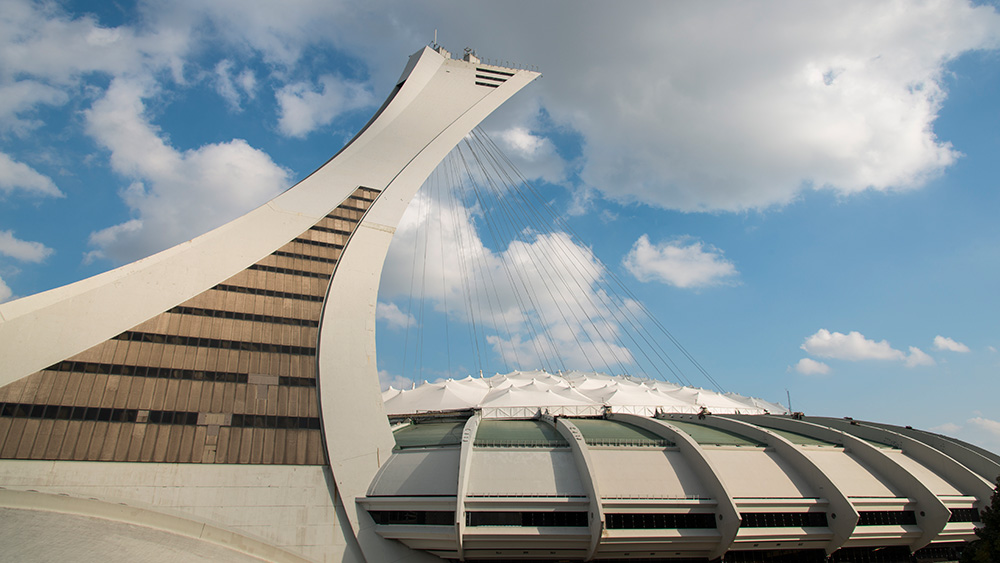
Above: As well as providing training facilities for athletes during the Games, the tower was designed to carry the weight of the stadium’s retractable roof via a series of cables.
In 1973, construction teams began work on the excavation. Over eight months, more than two million cubic metres of clay and limestone were removed from the ground — enough to fill 850 Olympic swimming pools.
By 1975, the base of the tower was emerging, along with the vertical beams that connect the foundations to the main support structures.
These were cast in place on site, and formed the basis for the 38 console sections. Their job was to create the so-called ‘rib cage’ of the stadium.
Made from 1,500 prefabricated elements, each console was completely unique, joining together around the technical ring in the centre of the venue.
It might look like just a rim for the roof, but the ring is about more than that. Because inside is where you’ll find the stadium’s lighting and ventilation equipment.
Turning point
Everything seemed to be going swimmingly in the early stages of the build, but it was about to hit some big hurdles.
In May 1975, the workers went on strike over wages, labour disputes and the supposed mismanagement of the project. The situation took five months to resolve.
At this point, construction had fallen way behind, and it was going to take a monumental effort to complete the build in time, with the Games now less than a year away.
Frustrated by how badly things were going, the provincial government stepped in to take control of the construction.
And if working conditions were tough before the strikes, things really ramped up afterwards. Activity on the site was virtually non-stop to make up for delays, with everyone working at full capacity in a herculean effort to make sure Montreal's Olympics went down in history for all the right reasons.
Even on the day of the Opening Ceremony, construction workers were still there clearing away building debris. And in spite of all of these delays — somehow, the Games went ahead.
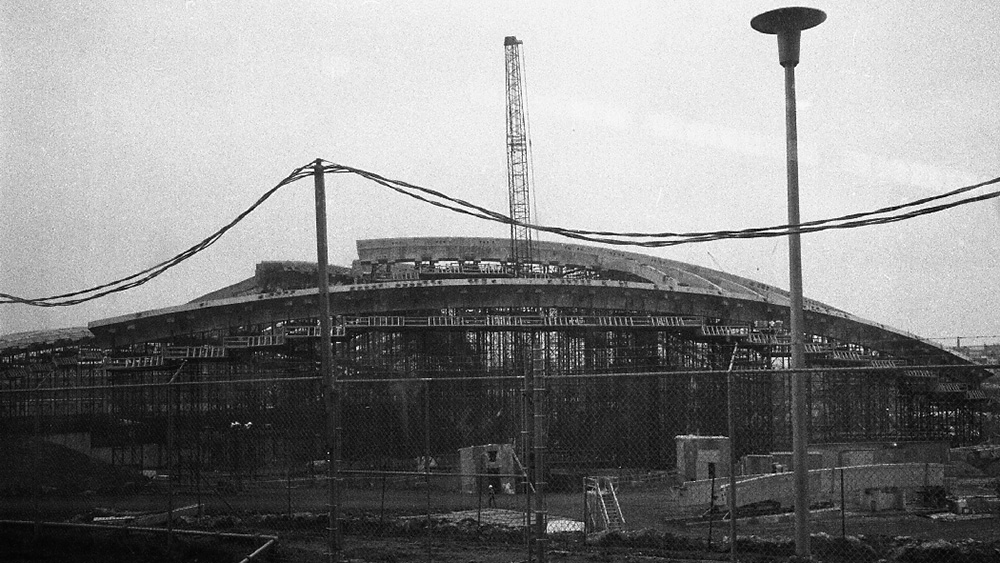
Above: The stadium under construction. Image courtesy of Archives de la Ville de Montréal.
But there was something noticeably missing — two things, in fact. That record-breaking tower was nowhere to be seen; there was only a sort of stump where it was supposed to be.
And with nothing to hold it up, that meant there was no roof. While enough was done for the stadium to function, Drapeau and Taillibert’s grand vision had sadly missed its big moment.
As for the Games itself, there were memorable highlights. The first ever ‘Perfect 10’ score in gymnastics, Princess Anne competing in the equestrian and Caitlyn Jenner breaking the decathlon world record.
When it was all over, though, Montreal woke up to the mother of all Olympic hangovers. Not only was it left with an unfinished stadium; the city still had to pay the tab.
And as it turned out, the original cost estimate was way off. The final figure for the building soared to over CAD $1BN — by far the biggest chunk of the overall bill for the Games, which topped $1.5BN.
Quite the opposite of what Drapeau famously declared after his city’s successful bid, when people were already questioning the numbers. He said: “The Montreal Olympics can no more have a deficit than a man can have a baby.” Awkward.
Unexpected costs
Why did it increase so much? A few reasons, actually. The unique design made it much more technically challenging to execute than first thought, and a rise in material costs due to the 1973 oil crisis didn’t help matters.
Then they had to account for all that overtime for the workers who toiled day and night to get the stadium to an acceptable position for the Games. And to top it all off — there were a series of corruption scandals that only fully came to light in the ‘80s.
But the city did in fact manage to settle this mountain of debt. In 2006. A full 30 years after the Olympics. Quebec’s government brought in a tobacco tax, and extended its national lottery scheme, to help with the repayments.
Projects like major infrastructure upgrades were put on hold. According to one report, a $2.8BN post-Olympic transport plan was shelved as a result of the mounting costs.
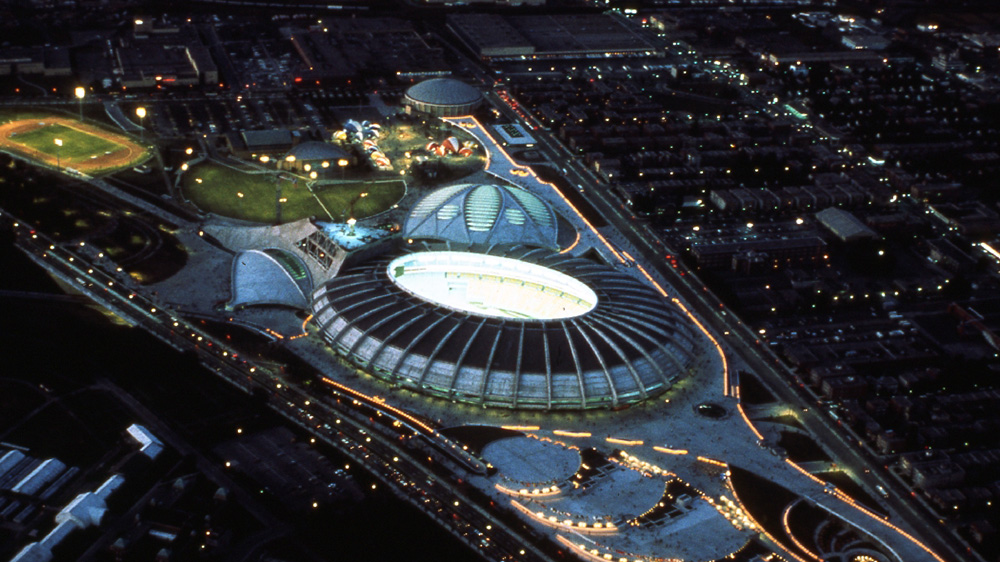
Above: The stadium had to open without the tower or the roof in place. Image courtesy of Archives de la Ville de Montréal.
Now, if you’re assuming the subsequent decades must have been pretty uneventful in comparison, think again. Don’t forget, they still hadn’t even finished building this stadium.
Another 11 years were spent completing the tower and roof, and that didn’t go smoothly either. Not long before it opened, the tower caught fire. Then, when the kevlar roof was used for the first time, it ripped.
This became a recurring problem until the early ‘90s, when the decision was made to stop opening it. And so the roof was replaced with a fibreglass one seven years later.
Oh, and let’s not forget September 1991, when the support beams suddenly failed, sending 55 tonnes of concrete crashing to the floor — luckily with no one underneath.
Largely due to these issues, and the fact that it was often unusable during cold weather — in Canada, of all places — the stadium has struggled to hold down long-term tenants.
Life after the Games
Yes, it was converted into a baseball stadium after the Games, but its size, shape and playing surface made it unpopular with fans and players alike.
There have been football matches played here too, and concerts from the likes of Pink Floyd and Metallica, but not the frequency of use you would expect from a venue that cost as much as it did, that’s been around for so long.
Same goes for the tower. Many people over the years have enjoyed the one-of-a-kind funicular that takes you up to an observatory offering stunning views of the city.
But the inside of the structure remained vacant until 2017, when it was converted into offices. And now the public spaces are closed for renovation. You can understand, then, why not everyone in Montreal is a big fan of the Big O.
But now that it has been fully paid off for years, is it time to stop ridiculing, calling it a money pit, or referring to it by its other nickname ‘The Big Owe’?
Unfortunately, those aliases probably won’t be going away for a while yet because, believe it or not, it’s set for another round of big spending.
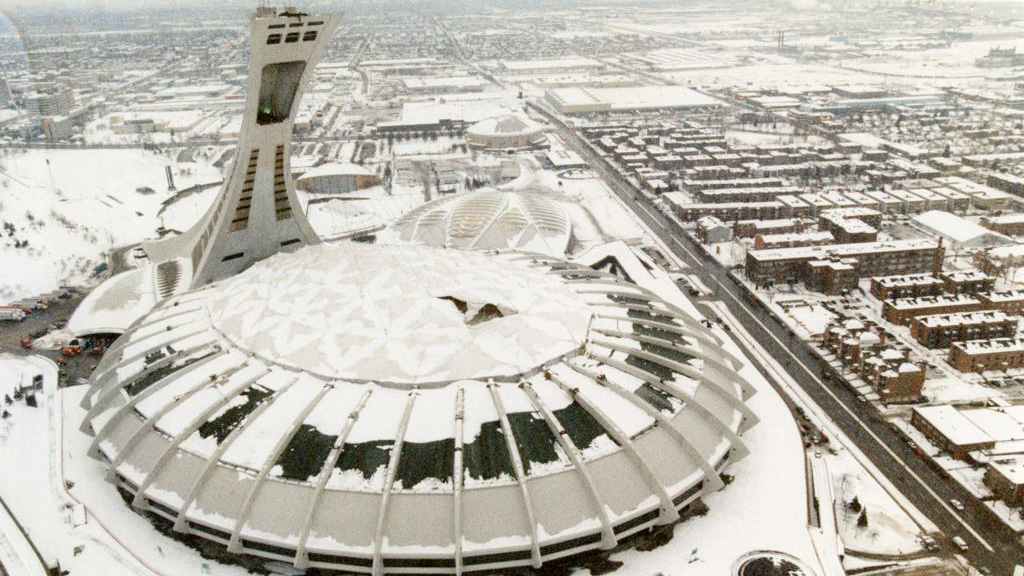
Above: The roof has been damaged on multiple occasions. Image courtesy of Parc Olympique.
A further $870M is now being forked out on the venue, and — who would have guessed? — it’s for that pesky roof.
The idea this time is to fix it once and for all, and we mean that literally. It’s going to be rigid and fixed in place, set within a transparent glass hoop.
No more materials that can tear or collapse; time to stick a solid cover on it and not have to worry about even more problems in the future.
So, when are they going to get started on this new roof? Well, they already have. In 2024, the covering was removed, opening the stadium to the elements once again — at least for the time being.
2026 will see the new roof pieced together on the ground using temporary supports before it’s lifted into the air. Through a system of ‘mega jacks’, the structure will be raised to around 50 metres and held there for two months.
That’s when the installation will take place, including reattaching the cables that connect the roof to the tower. If all goes well, the stadium can reopen to the public in 2028.
What it will mean
OK, so when it is up and running again, with a roof that hopefully won’t cause any more grief, what’s the plan then? Will we finally see it in regular use? Well, that is the idea, and there are reasons to be hopeful.
Montréal has missed out on a fair bit of action: they were originally considered a potential venue for the 2026 FIFA World Cup. But they had to withdraw, partly because the cost of upgrading the stadium was too much at that point.
They also lost the chance to be a stop on Taylor Swift’s highest-grossing tour of all time. Again, it was mostly down to the state of the stadium.
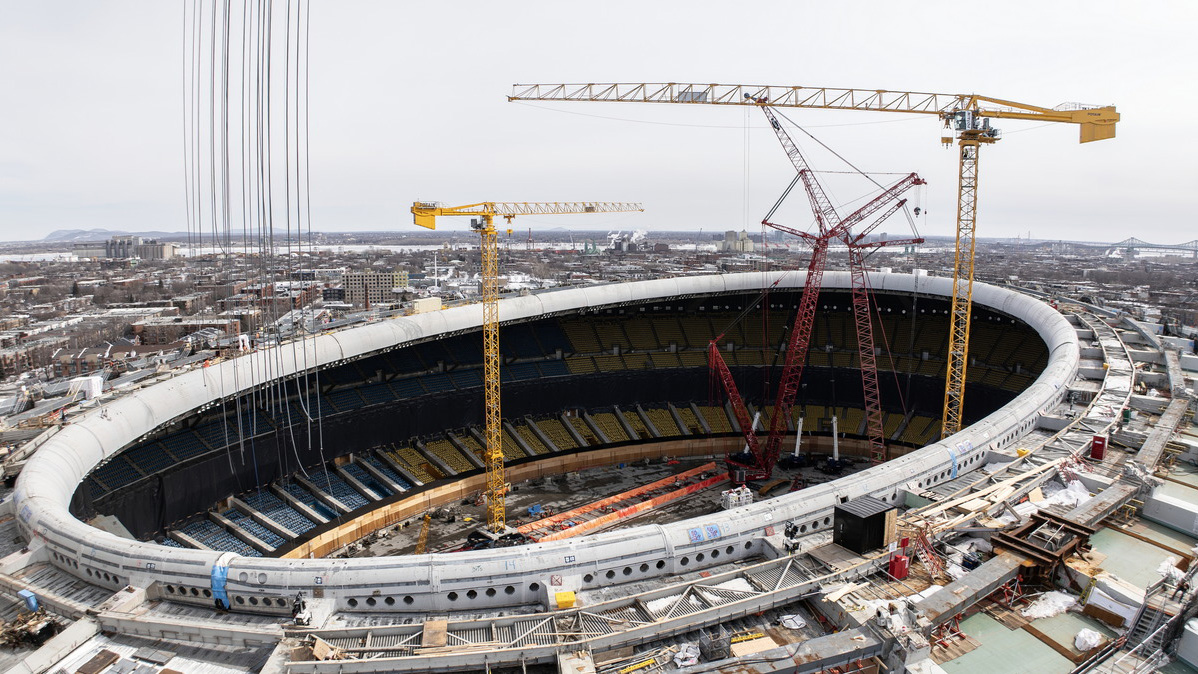
Above: Work on the new fixed roof is now in full swing. Image courtesy of Parc Olympique.
However, when the building does become fit for purpose at long last, the theory is it will be in a much better position to take these opportunities, instead of having to pass on them.
In fact, the local authority has said the upgrades could see the venue bring in as much as $1.5BN over ten years.
It would do this by hosting large events regularly and welcoming more tourists to the site than it already does.
Of course, there is another drastic option that springs to mind when considering what to do with this place. Why not just demolish it, and stop it from becoming an even bigger financial burden?
Well, the cost of knocking it down is thought to be even more expensive than improving it. The province has quoted a figure of up to $2BN.
This is partly because it sits above a metro and so couldn’t be demolished through common methods, like explosives.
Those ‘ribs’ that we mentioned earlier were built using prestressed concrete reinforced with high-tension steel cables, so they would have to be taken apart very carefully, and that doesn’t come cheap.
You can see, then, why the choice was made to not just keep it, but give this historic building one last revamp. And yet, there’s also a feeling that this time they can ill afford any more slip-ups.
Not giving up
The legacies of Olympic stadiums have been a big talking point for many years, and Montreal’s is no exception.
Few construction projects have gone so wildly over budget and struggled to serve a valuable purpose across such a lengthy timeframe.
But there’s no denying that objectively, it’s a thing of beauty, and perhaps Montreal should be applauded for its efforts to maintain it, despite the opposition.
Now it’s being given the chance to prove its worth for good, and become a landmark that this city can at last be truly proud of.
To try everything Brilliant has to offer for free, visit https://brilliant.org/TheB1M/ You’ll also get 20% off an annual premium subscription.
Additional footage and images courtesy of Archives de la Ville de Montréal / CC BY-NC-SA 2.0, Parc Olympique, ACDF Architecture, Adrien Williams, Caribb / CC BY-NC-ND 2.0, CBC, CityNews, CTV News, Mammoet, ABC News, abdallahh / CC BY 2.0, Claude Brochu / CC BY-SA 3.0, CNN, Dennis Jarvis / CC BY-SA 2.0, Jean-Marie Brochu / CC BY-SA 4.0, Mark Carter / CC BY-NC 2.0, Metallica, R.D. Barry / CC BY-SA 2.0, Serge Chapleau, srv007 / CC BY-NC 2.0, 13winds, TVA Nouvelles / CC BY 3.0, V2COM and zemistor / CC BY-ND 2.0. Archive construction footage courtesy of Archives de la Ville de Montréal, P064-X-P01 / CC BY-NC-SA 2.5 CA
We welcome you sharing our content to inspire others, but please be nice and play by our rules.
